Tangier Sound Fishing Report, 11/30/2018 Update:
The leaves have finished turning and are getting close to finally falling and succumbing to winter’s grasp, and so are the fish. As temperatures are dropping quick, so are the amount of rockfish around here. The clear winner for finding those remaining fish is going to be trolling. Much to the dismay of light tackle anglers, trolling has the clear advantage when seeking out the fish and covering large areas to locate them. Chartreuse and purple shad on umbrellas and tandems are two popular colors for enticing the remaining stripers to chomp down, netting a grab bag of throwback rockfish plus a few keepers that will be eager to take a stab at a passing lure. East of Kedges remains an area you’ll want to probe. Truth be told, many area anglers are simply running out of the Sound and into the open Bay's southern waters, where the bite has been stronger; see the Lower Bay and Way South and VA reports, for more on what's happening out there.
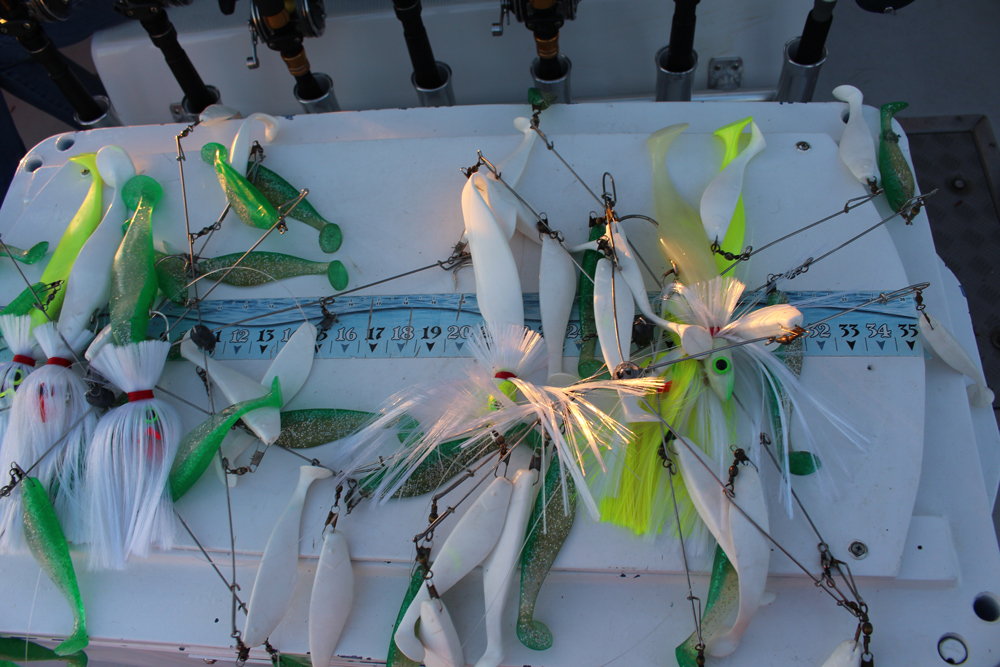
What about light tackle? It's been losing steam in this area, with the shallow water bite long done and suspended groups of schoolies tough to find and travelling around using your fish finder remaining the best way to do so. Vertical jigging over hard oyster bottom in 25 to 30 feet of water has been a way to get some perch and rockfish alike, depending on the size and weight of the jig that you’ve got tied on. A tandem rig with a jigging spoon on the bottom and a streamer or small tube jig on the dropper gives you a shot at both species at once. The mouth of the Nanticoke has been the most reliable bet, for finding those perch with a few small stripers mixed in.
When all else fails, up-river areas of the tributaries to the Sound have a good pickerel bite right now. Live bull minnow and small spoons or spinnerbaits are doing the trick.
Tangier Sound Fishing Report, 11/22/2018 Update:
Happy Thanksgiving, anglers! The leaves are finally falling and succumbing to winter’s grasp, and so are the fish… but there are still some stripers to be caught. As with other areas of the Bay, the clear winner here is going to be trolling. Much to the dismay of light tackle anglers, trolling has held a clear advantage recently for seeking out the fish and covering large swaths of water to find mostly scattered keeper fish. Anglers are towing their weighted umbrellas and bucktails off along the deep channel edges (which I’m sure you’ve heard time and time again, because it’s working!) Chartreuse has been the most popular color for enticing the remaining stripers to chomp down recently. Quality over quantity is the objective if trolling is your main game plan out on the water, while light tackle anglers are encountering mostly smaller fish when birds are spotted. Towards the east of Kedges straits over towards the mouth of the Manokin, where there are plenty of deep water edges to work, has been a good zone.
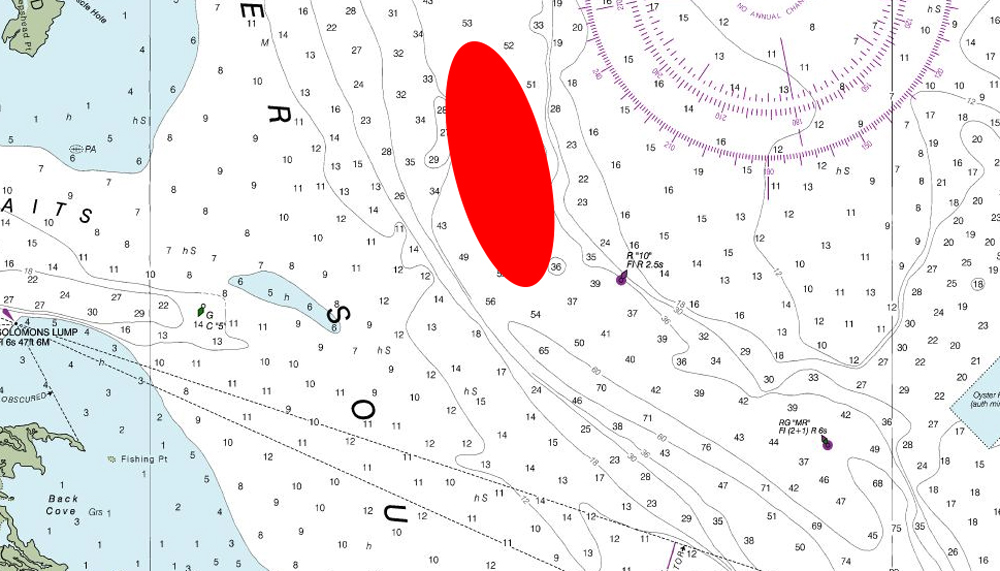
Vertical jigging has been tougher, but is producing some perch and rockfish alike along channel edges, depending on the size and weight of the jig that you’ve got tied on. Butterfly-style jigs will net a large percentage of the larger fish that are hunkering down deep.
Tangier Sound Fishing Report, 11/16/2018 Update:
Trolling. It’s been the number one way to pick at the stripers that are holding in the deeper waters all through the Bay, including in the Sound. Umbrella rigs are the mainstay in your spreads, with six-inch shads in chartreuse, watermelon, and white all working to their fullest effect. Expect a lot of schoolies here, as you’re pulling through the suspended fish in the water column. When moving about near the deep channel edges (30 to 45 feet), remember to drag bounce a bucktail on the bottom to dredge up those larger fish. This is crucial as a lot of anglers have reported getting their best fish using this method. Channel edges just outside of the Nanticoke have been good, but moving towards the Manokin and Kedges Strait have also been spots to pull through.
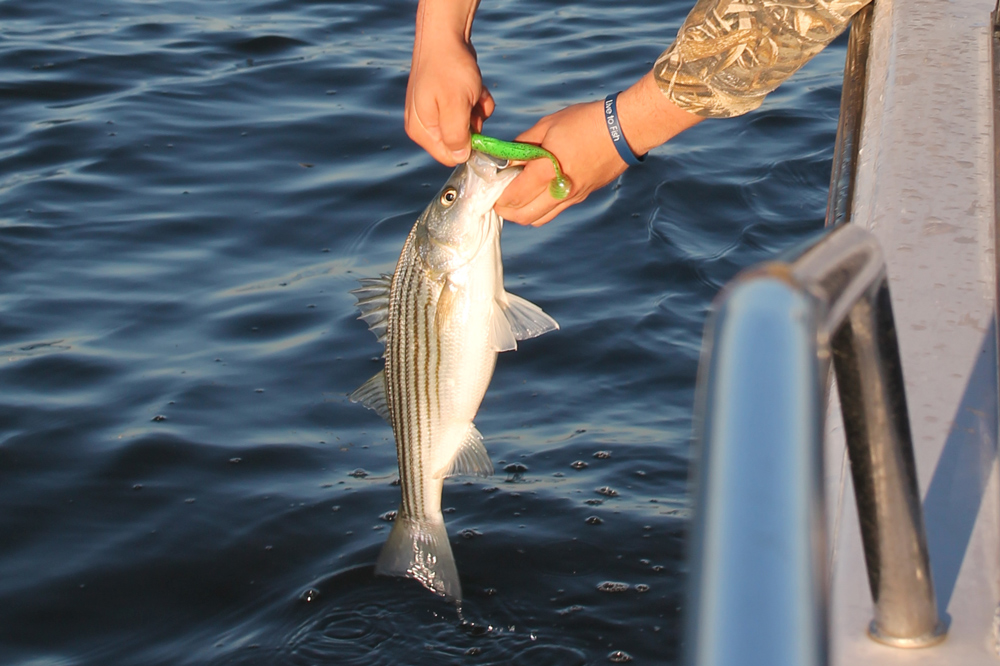
Light tackle has been tougher when targeting stripers since the birds are not acting incredibly helpful much of the time. Locating the fish is going to come down to your depth finder and knowledge of where the structure and hard bottom is. Terrapin and Flat Cap have been two recommended spots for finding oyster beds in moderately deep water. Jigging with any soft-plastic will do the trick, just make sure it’s chartreuse. Vertical jigging works well in deeper waters, too, and if you use a lure that’s a bit on the small to moderate size, you’ll be bound to find the white perch that are mixed in with the stripers. If you find any, try out the new Blue Blue vertical jig. Word is that any stripers holding up at the bottom have been quick to smack it with its butterfly-style action, recently.
Light tackle casters working the islands are still getting strikes, but water temps are becoming such that fish are leaving the shallows and from here on out, working deep water is going to be a safer bet.
Tangier Sound Fishing Report, 11/9/2018 Update:
The sound has been lively this week, folks. The trolling bite has been dominating for anglers sporting the six-inch shad umbrella rig to entice many of the (mostly throwback to barely-legal) stripers to bite. However, the major tributaries are your best bet at dredging up the keepers. Skipping white bucktails off the bottom of channel edges outside of the Manokin and Pocomoke sound be excellent spots for trolling this week. Getting down deep is not quite as important down south as it has been in the northern sections of the bay, but you should still shoot for those channel drop offs.
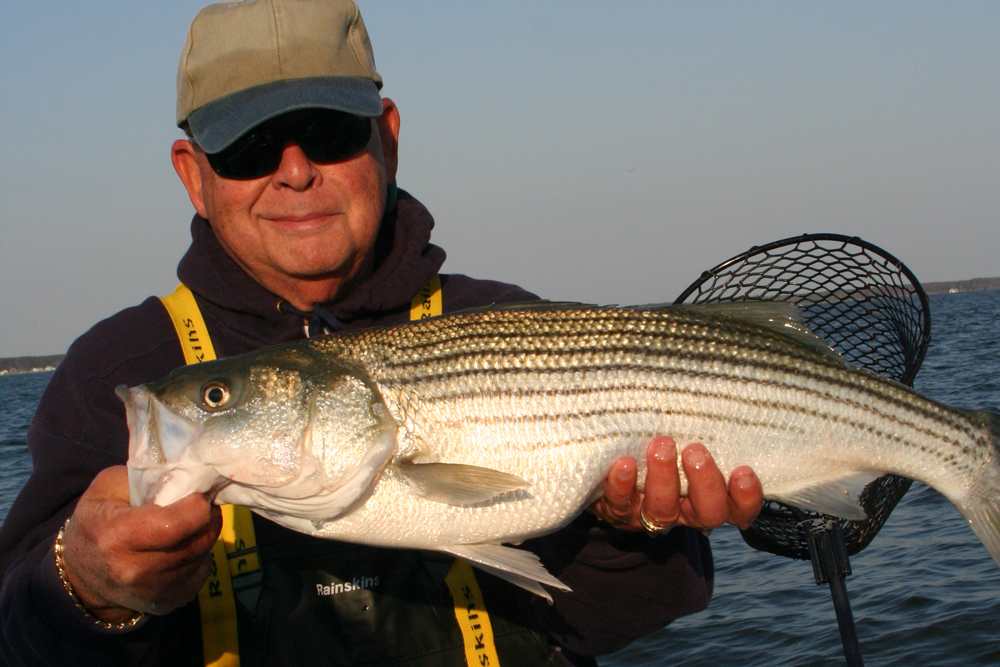
As far as the jigging and light tackle bite as a whole goes, we’re seeing the birds work harder in the Sound than in most other section of the bay. Tossing a soft plastic tail towards a school of feeding fish will definitely net you as many schoolies as you want, and using large plastic tails in the seven-inch range has been enticing the bigger fish to chomp down. If topwater is more your thing, just be sure to hit the skinny waters during the early hours of the day. Spooks will be your best bet, as poppers have sort of fallen out recently in comparison. Reports indicate that most of the keepers in the shallow water spots are sub-legal and up into the mid-20s.
While you’re out in the deeper sections, be sure to hit up the underwater ledges that are near the Pocomoke and the Naticoke; there have been reports of a few straggling speckled trout mixed in with other schools, some of them reaching nearly five pounds. The perch are also moving about in this area, and they’ve been very keen on nibbling bloodworms on tandem bottom rigs.
The striper bite has been on a switch up recently due to the cooler weather. At times the bass are becoming a bit tight-lipped, but topwater and jig action in shallow water has been eliciting strikes from aggressive fish. Skinny water has been holding mostly sub-legals with good numbers of 20-somethings plus a few 30-plus fish popping up here and there. One reader let us know that finding good structure in the shallows has been key and that the fish have been balled up in tight, compact locations, so it’s been good to stay on the move until you get some hits and then focus hard on that area. If you spot any flocks of gulls in the open water, of course, you know what to do…
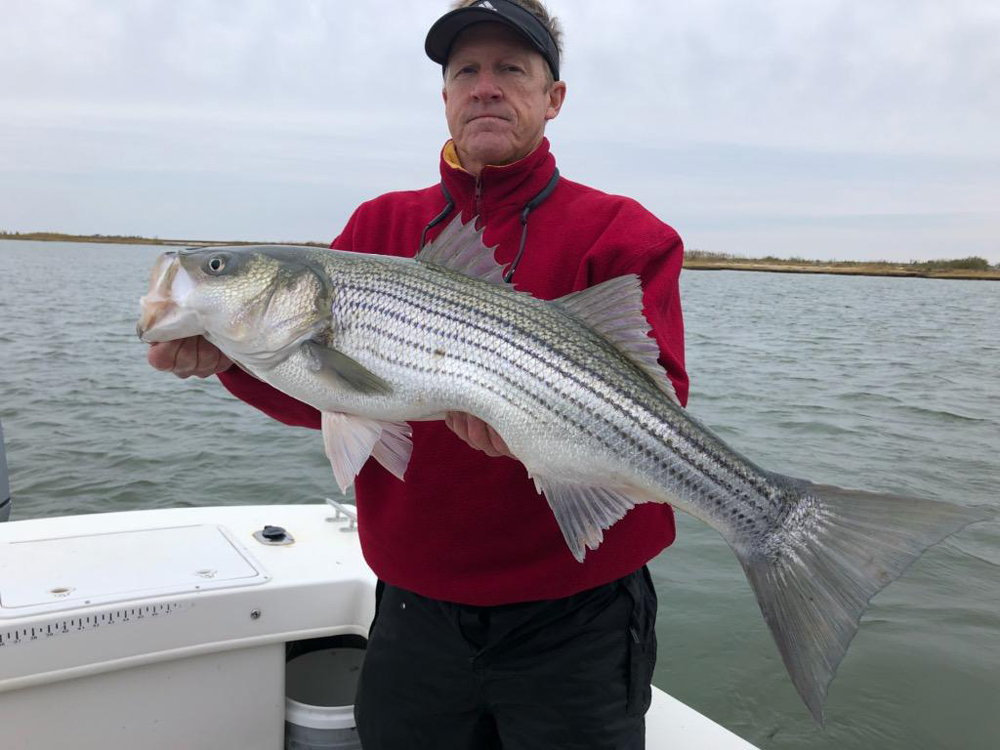
Perch anglers are also discovering that the action is picking up as other bottom fish have now essentially departed the Sound. Dropping bloodworm or grass shrimp in the river mouths, over hard bottom edges, has been a good way to get ‘em.